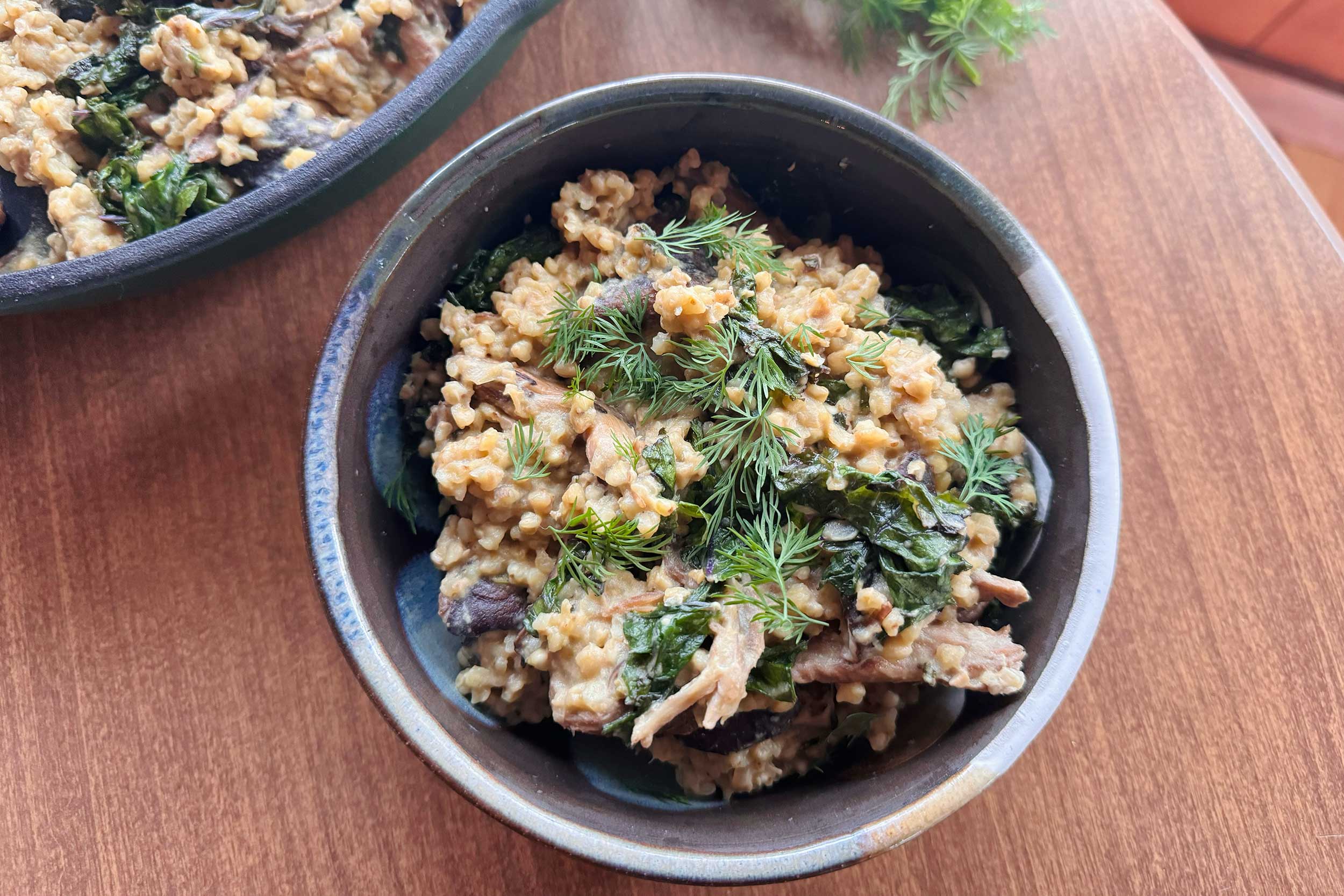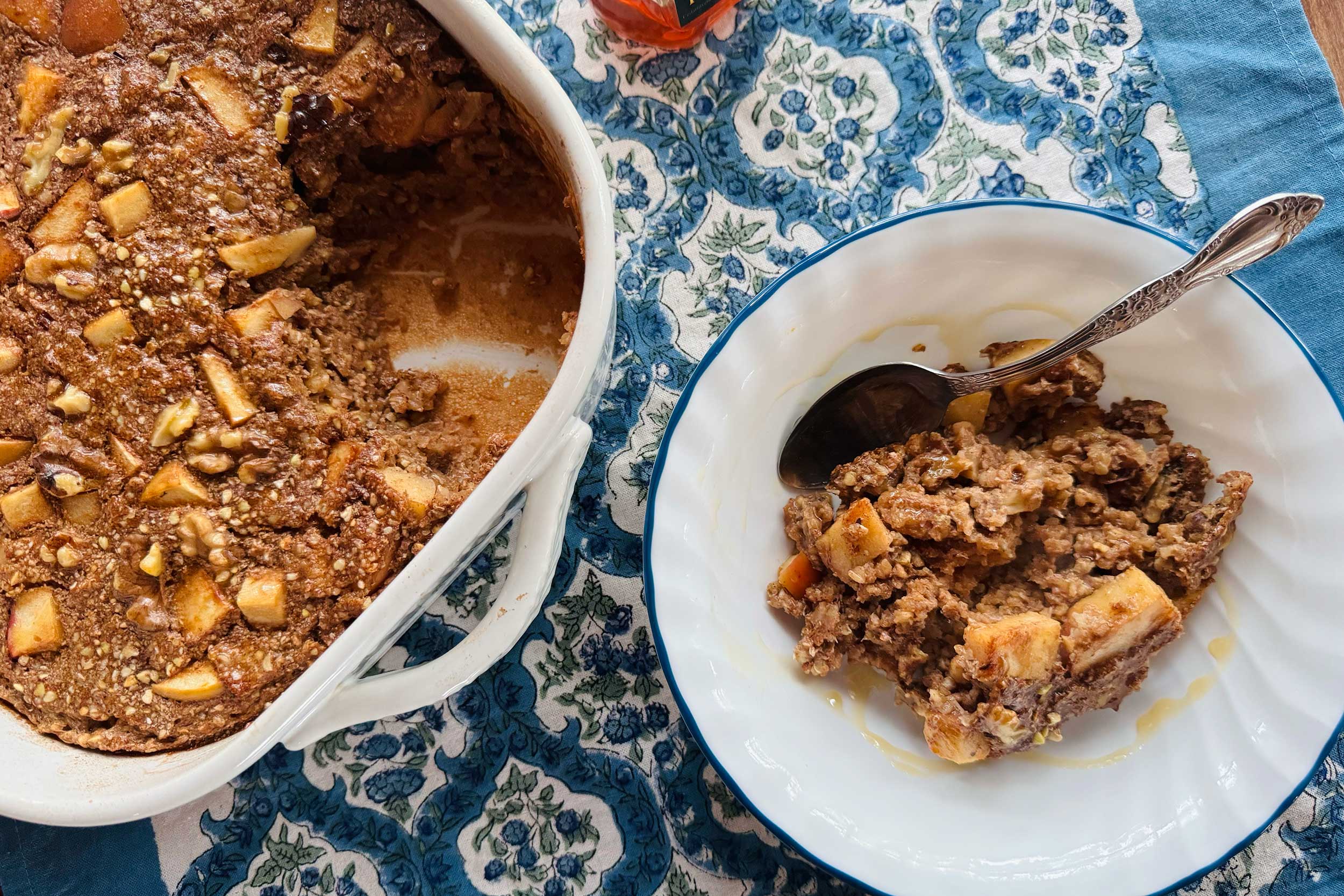Quinoa and tofu get the spotlight, but it’s time to consider eating more buckwheat
Heya, and welcome back to Cool Beans! Today, we’re continuing our journey through the basics of a planet-friendly diet, and addressing what may be the No. 1 concern for people trying to eat less meat: getting enough protein. For starters, a well-rounded veggie-heavy diet is abundant in protein-rich sources like legumes and nuts, but this week I want to spend some time with one of my favorite unsung macro heroes: buckwheat.
Like quinoa, soy, and chia seeds—all of which tend to hog the non-meat protein spotlight—buckwheat is a complete protein, meaning it’s got the nine essential amino acids our bodies can’t make on their own. Cup-for-cup, its total protein content is about 30% lower than a powerhouse like farro or about 4% lower than an everyday grain like oats, but neither of those deliver on all nine aminos.
You’ve most likely encountered buckwheat milled into the earthy, nutty flour used to make savory French crêpes, Japanese soba noodles, or pancakes, but today we’re talking groats. Groats are the hulled seeds of the plant, which, when cooked like a grain, have a pleasantly chewy texture that’s similar to brown rice or farro. The robust flavor of buckwheat pairs equally well with either sweet or savory ingredients, so today I’m making it the centerpiece for breakfast, lunch, or dinner.
The review: Dumping my oats for groats
Buckwheat is a staple food in Eastern European cooking, where the toasted groats, called kasha, are featured in dishes like potato knishes. At the store, look for raw groats, like these from Eden Foods as opposed to ones labeled “roasted” or “toasted” like this kasha.
I’ve been baking with buckwheat flour for a while because I find its grassy, hoppy flavor to be a great pairing with fruits and even chocolate, but I’m relatively new to cooking with groats. This cozy, spiced apple breakfast bake seemed like a great place to start. It’s similar to a baked oatmeal, swapping the rolled oats for groats, and is full of apples and warm spices like cinnamon and ginger.
If you’ve ever baked oats and layered a crumble into a casserole dish, you’re familiar with the entire process. To avoid a grainy texture and give the porridge a creamier consistency, the groats first get “cracked” in the blender or food processor and then mixed with flaxseed, vanilla, cinnamon, nutmeg, ginger, and salt. The mixture lays down into a greased baking dish, alternating with layers of maple-sweetened coconut milk and sprinkles of chopped apples and walnuts. The whole thing bakes for 45 minutes, transforming from a “hot, soggy mess” to a more set mixture, somewhere between a baked oatmeal and a crumbly streusel.
Served with a dollop of coconut yogurt and a drizzle of honey, this is my definition of a luxurious make-ahead breakfast. I will be baking it on Sundays with whatever fruits I have around and eating leftovers, warmed up, throughout the week. Buckwheat has a grassy flavor with hints of rose, which is why it works so well with apples and sweets in general. Even raw, the groats add a pop of flavor and crunchy texture to baked goods like banana bread.
Despite the complexity they bring to a dish, groats are nowhere near as fussy to cook as other go-to grains like quinoa and rice. That makes them well suited to star in savory weeknight dinners—like a protein-packed twist on one of my favorite comfort foods.
The recipe: Don’t tell nonna about this ‘risotto’ cheat
Earthy buckwheat is a perfect flavor match for wild mushrooms. Oysters happen to be my favorite—and are another solid source of plant protein. I love their meaty and velvety texture and how crispy the edges get when seared. What better way to top off a bowl of creamy buckwheat “risotto”? This recipe has very little in common with a traditional risotto, but it’s every bit as satisfying and requires way less standing and stirring than a rice-based dish. I used a combo of oyster, shiitake, and trumpet mushrooms, but you could make this with whatever fungi you find at the store.

Wild Mushroom and Buckwheat Risotto
Yield: 4 servings
Ingredients:
3 tablespoons extra-virgin olive oil
10 ounces wild mushrooms, like oyster, shiitake, and/or king trumpet, cut into large pieces
1 teaspoon kosher salt, divided
¼ teaspoon freshly ground black pepper
1 large shallot, finely chopped
2 garlic cloves, finely chopped
1 tablespoon finely chopped sage, rosemary, or thyme
1 ⅓ cups buckwheat, rinsed
½ cup white wine
2 ½ cups low-sodium vegetable broth
3 ounces plant-based cream cheese
4 ounces Tuscan or curly kale, stemmed, leaves roughly chopped (about ⅓ bunch)
¼ cup nutritional yeast
Chopped fresh dill, for serving
Procedure:
Heat 2 tablespoons of olive oil in a Dutch oven or large, deep skillet over medium heat. Arrange mushrooms in a single layer and cook, undisturbed, until the bottom side is golden brown, about 3 minutes. Season with ½ teaspoon salt and ¼ teaspoon pepper and continue to cook, tossing often, until golden brown all over, about 5 minutes.
Add remaining 1 tablespoon of olive oil. Add the shallot and ¼ teaspoon of salt and sauté, stirring occasionally, until softened, about 5 minutes. Stir in garlic, chopped herbs, and buckwheat and toast for 1 minute.
Add the wine to deglaze the skillet and let simmer until mostly evaporated, 2 to 3 minutes. Add the stock and remaining ¼ teaspoon salt. Bring to a boil, then simmer gently, stirring occasionally, until buckwheat is tender and most of the stock has been absorbed, about 15 to 20 minutes.
Stir in cream cheese, kale, and nutritional yeast. Divide into 4 bowls and garnish with chopped dill.
Notes and Substitutions:
If you don’t have wine or want to avoid alcohol, use more broth or water with a splash of sherry vinegar or white wine vinegar.

